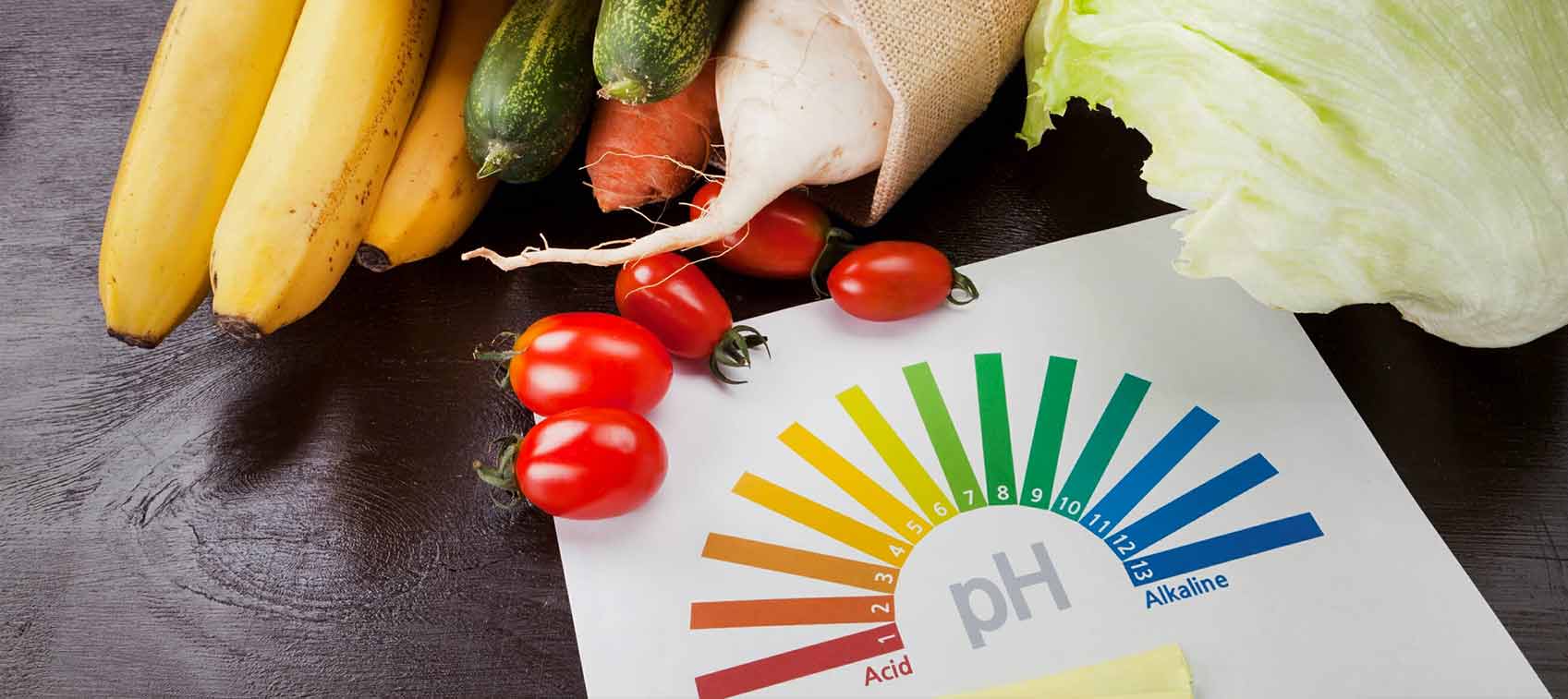
The human body is an indivisible, integrated organism, not a collection of various unrelated parts. In this vein, there are various mechanisms in your body that work together to maintain a proper pH balance throughout your body.
The acidity or alkalinity of a substance is measured using pH. The pH scale runs from 0 to 14, with 0 being the most acidic, 14 being the most alkaline, and 7 being neutral. To survive, our bodies must maintain pH very close to 7.4, which is just on the alkaline side of neutral. If your body’s pH varies too much from this ideal, it becomes difficult for various enzymes to function properly.
Maintaining this slightly alkaline state is a constant challenge, primarily because of the acid-forming functions that take place within the body, and the overabundance of acid-producing foods we consume.
The idea that various foods influence the pH of the body isn't new. In fact, as far back as the early 1900s, numerous doctors began studying the pH-altering effects of different foods. They found that while a few foods were "neutral" in their effects, most foods were either "alkaline-producing" or "acid-producing." They also found that simply changing the diet could change the pH of the body.
Not surprisingly, bringing the body's pH closer to the normal range helped patients get rid of many of their health complaints. Overacidity has even been linked to the formation of cancer, heart disease, diabetes, and osteoporosis.
Is Your Body Too Acidic?
There are two ways to determine whether your body is too acidic. You can go by co-occurring symptoms, or you can do a simple at-home test.
Symptoms of over-acidity include:
- Constant fatigue
- Easily running out of breath
- Frequent sighing/feeling like you can’t get enough air
- Muscle pain or cramping after walking short distances
I've also found that when people are very acidic, their tissue levels of oxygen are so low that they have difficulty holding their breath for more than 20 seconds. The length of time you can hold your breath is one technique you can use to document the difference that occurs after adapting a more alkaline-producing diet.
At-Home Tests for Measuring pH
If you are stil unsure if you're too acidic using these criteria, there are simple and fairly accurate ways to test yourself.
First, you can check the pH of your saliva using Hydrion test strips or pH paper. Saliva closely parallels the blood when it comes to pH. Compare your results to these benchmarks:
Normal blood pH = 7.4
Normal saliva pH = 6.5 to 7.0
If your saliva pH consistently falls below 6.5, you are acidic. If it consistently reads above 7.0, you could be too alkaline.
You can assess your overall digestive health by measuring your stool pH.
Unlike your body pH, which should be slightly aklaline, your stool pH should be slightly acidic, around 6.7 to 6.9. A neutral or alkaline pH generally indicates poor balance between beneficial bacteria and bad bacteria; however, a very acidic pH can be negative as well, and often occurs when too much sucrose (table sugar) or lactose (milk sugar) are consumed. Acidic pH levels also occur along with conditions that cause diarrhea.
You can check your stool pH by using pH paper. Simply touch the paper to a moist sample (before it hits the water in the toilet) and compare the color change to the chart that comes with the paper.
How to Achieve pH Balance
Eating a diet of 75–80 percent alkaline-forming foods—and minimal in acid-forming foods—is the best way to maintain a slightly alkaline pH in your body.
Making these changes can quickly improve your health. For even faster results, however, try juicing. Making and consuming fresh vegetable juices on a daily basis will jumpstart the process of alkalizing your body. This is why many people feel so good after they begin a juicing program. (Note: Due to the problems associated with high blood sugar, I would recommend using vegetable juices instead of fruit juices. Eating whole fruit affects blood sugar less because the fiber in fruit slows the body’s processing of fructose.)
Although switching to a more alkaline diet will benefit most everyone, there is a small percentage of the population whose bodies are actually too alkaline. The few individuals who have this condition usually suffer from calcium deposits.
Calcium forms when the surrounding environment is alkaline. This results in symptoms of migrating nerve and joint pain. Insomnia can also be a problem, and it is often associated with early morning stiffness. These individuals wake up stiff, but the stiffness quickly improves as muscle activity produces lactic acid. Lactic acid helps neutralize the buildup of alkaline compounds and bring the body's pH back into balance.


